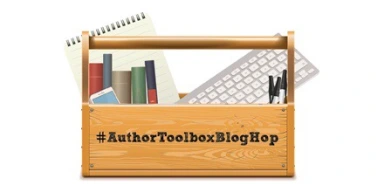You may or may not have heard about mind maps for brainstorming ideas. However, I find coming up with those ideas to be considerably difficult sometimes, especially when it comes to teaching essays in class.
We need a starting point. We need a topic. How can we start a mind map, or any kind of brainstorm for that matter, if we don’t have a topic or idea to start our brain gears moving?
In order to help my students (and have a bit of fun in the process), we started creating Treasure Maps of ideas. These are one way that we can generate writing topics.
2 Steps to Create a Treasure Map
1. Draw the diagram.
Think about a place that holds a lot of memories for you: a childhood home, school, a sports field, etc.
When you’ve got that place in your mind, draw it. This could be a detailed drawing, a basic sketch, or a digital drawing. Whichever of those works for you, works!
I’m going to demonstrate with a Treasure Map of an old childhood home.

2. Fill in the memories.
Once you have your diagram, think like a pirate! ‘X’ marks the spot.
In this case, ‘X’ signifies a memory in that particular location on your map. Your goal is to fill your map with lots of treasure to ensure you have a lot of ideas to write about.
As long as the memory makes sense to you, that’s all that matters. Don’t worry about being too detailed on your map, especially if you need the space.

When you’re done, you’ll notice all the memories with stories to tell. Some of them might be quick poems you could write, but some of them could easily turn into a longer work.
What can I do with this?
For the most part, we use these maps to generate personal narrative ideas. They are filled with personal memories waiting for the chance to share their stories.
As I dive further into world-building (one of my struggles), I can see another purpose for these Treasure Maps: character development. Using the Treasure Map could potentially help create a piece of the character’s world and develop scenarios that happened in those locations.
Comments
When you create your Treasure Map, please share it and tag me on Twitter!
Did you find this exercise helpful? Will you use it for character development? Do you have another idea for this Treasure Map? Share with me in the comments!
Author Toolbox
This post is part of the #AuthorToolboxBlogHop (hosted by Raimey Gallant), which is dedicated to helping writers become stronger and more confident in their craft. Click here for more information, to continue hopping through other posts, or to join in!

That’s an awesome idea for worldbuilding! Thanks so much for sharing it. 🙂
LikeLiked by 1 person
The first time I used mind mapping, I was stuck on a solution to a problem I’d created for my character. A fellow writer helped me by grabbing a sheet of paper and mind mapping. It was done with stick figures!
Now, I use mind mapping whenever I get stuck on a scene. It helps me to know where I need to go next and what not to leave out.
LikeLiked by 1 person
Thank you for commenting! Mind mapping is such a great tool!
LikeLike
This is such a unique idea! I love the idea of using it to flesh out character backgrounds, maybe even character experiences too. You could do it with any kind of a map where something major happened in their lives, or maybe even one that happens in the novel itself. Thank you so much for sharing this, it’s already giving me ideas!
LikeLiked by 1 person
Thanks!! I hope your ideas work out! (Could be something fun in a bullet journal.)
LikeLiked by 1 person
I love the treasure map as character development tool. This is really smart.
LikeLiked by 1 person
Thanks! I can’t wait to try it for character development!
LikeLike
My maps are usually just in my head but I like this idea so will give it a go. As my newest story idea is a 3 book series, it might be very useful to keep track.
LikeLiked by 1 person
Tracking a series is quite a trial! Good luck!
LikeLike
Thank you – it is my first one so I am on a steep learning curve
LikeLiked by 1 person
I just started working with something like this — more of a collage, but same idea. I love this! Your idea is a lot more fun. I’m clearly using this to rethink my collage process…. Hmmmm….
LikeLiked by 2 people
I hope your collage goes well! (I would love to see what you create!)
LikeLiked by 1 person
This seems like a really engaging activity. I love how personal and individual it is. I should do more with graphic organizers and other visuals in my own teaching–thank you for sharing!
LikeLiked by 2 people
I love graphic organizers, and my students enjoy the freedom they have when they create their own. We have so many!!
LikeLiked by 1 person